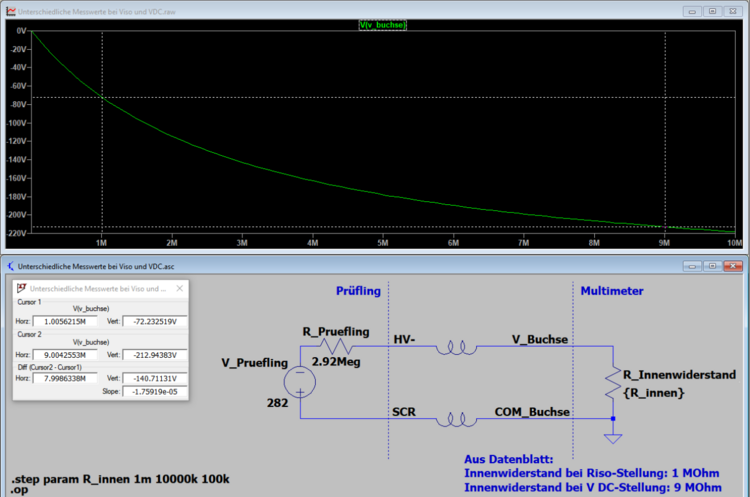Why does the multimeter measure XXX volts in the ISO position, but YYY volts in the V DC position?
(FAQ Nr. MM010)
08 January 2024 - 14:18
| Multimeter | AC/DC, curve, external voltage, internal resistance, measured values, voltage
The internal resistance of the measuring device is different and the external voltage display in the ISO position does not show a sign, as this is an AC+DC measurement. Instead, the measured external voltage has an internal resistance. But: The internal resistance and the voltage at infinite internal resistance can be calculated from these two values:
(Calculation of Rx and Vx.xlsx)
Rx = desired internal resistance of the source
Vx = Voltage of the source with infinite internal resistance of the measuring device
R1 = Internal resistance of one measurement
R2 = Internal resistance of the other measurement
V1 = Measured value of the first measurement type
V2 = Measured value of the second measurement type
Rx = R1*R2*(V2-V1) / (R2*V1 - R1*V2)
Vx = V1 * (Rx / R1 + 1)
Example:
The MetraHit IM shows in one position with 9 MOhm input resistance in V DC -213 V, but in the ISO position an AC+DC value of 72 V. Neglecting an AC component, the simulation (LTspice, Different measured values for Viso and VDC.asc) produces the following curve as a function of the internal resistance:

The input resistance (2.1 MOhm) of the 27i can be determined quite well from the curve using the measured value of the 27i also used.
The same effect occurs with the MetraHit AM Xtra and MetraHit PM Xtra, for example, if the voltage is measured at 10 and 1 MOhm. This can also be used to determine the internal resistance of the source.
© 2026 GMC Instruments. All rights reserved. | Imprint | Privacy Statement